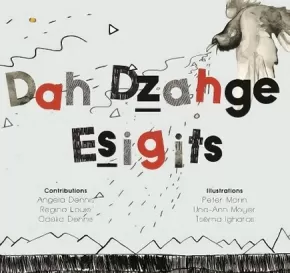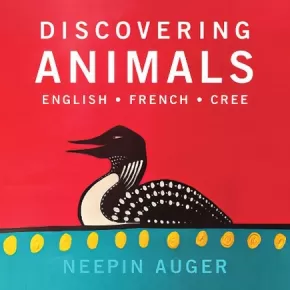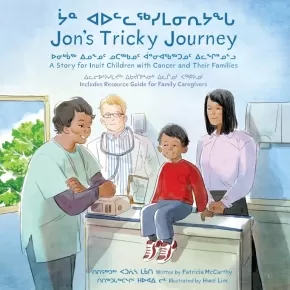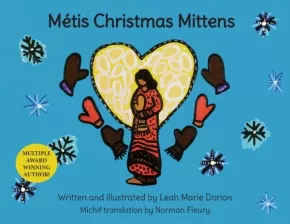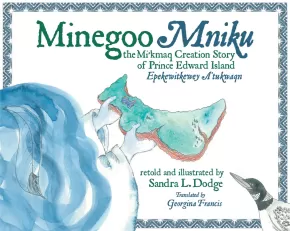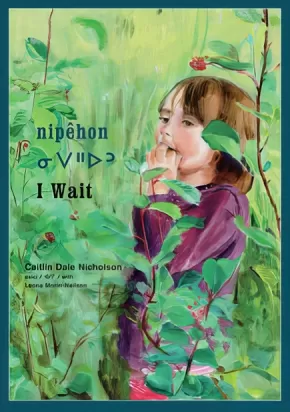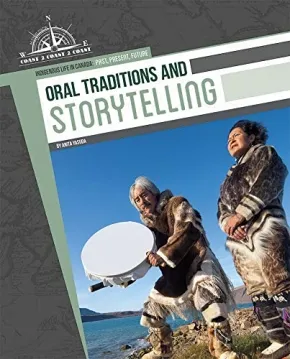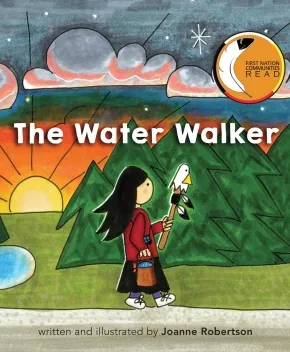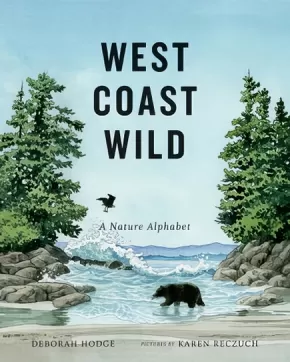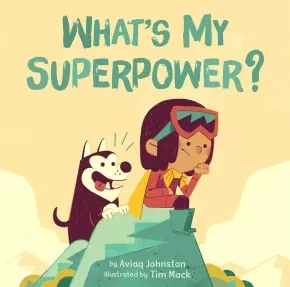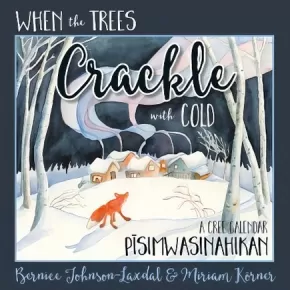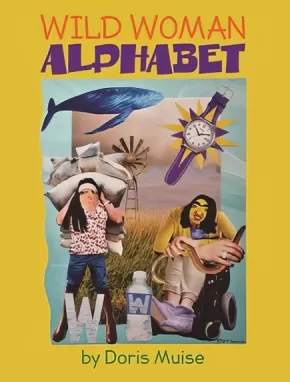
Language
346
-
360
of
418 Results;
Sort By
Go To
of 28
Dah Dẕāhge Esigits: We Write Our Language
$19.95
Format:
Paperback
Text Content Territories:
Indigenous Canadian; First Nations; Dene; Tahltan (Nahanni);
ISBN / Barcode: 9781926886497
Synopsis:
Synopsis:
This beautifully illustrated book teaches the language of the Tahltan nation. The Tahltan alphabet is featured with the 47 sounds of the Tahltan language. Learners can match vowels, consonants and sounds to English equivalents and symbols. It is a resource for those who can already speak Tahltan, but wish to learn to read and write as well.
From the Preface:
The (Tahltan) Alphabet was developed by linguist Colin Carter in consultation with Tahltan speakers, Elders and language instructors...The (Tahltan) Alphabet...is phonetic, which means that every Tahltan sound is written with consistent symbols. This is different from the English alphabet where sounds can be written with various letters and combinations of them. The Tahltan alphabet is a summation of the 47 sounds of the Tahltan language. Carter and the Tahltan consultants decided to use English letters and represent specialized Tahltan sounds with more than one letter (eg dz, tl, ch) and other markings such as underlining, apostrophe and macron.
Educator Information
Recommended for Grades K-7 English Language Arts and courses in Indigenous language learning.
This book was coordinated by Edosdi Dr. Judy Thompson, developed by language leaders Angela Dennis, Regina Louis and Odelia Dennis, and illustrated by Una-Ann Moyer, Perer Morin and Tsema Igharas. The Telegraph Creek / Dease Lake dialect was contributed by Dah Dzahge Nodeside chair, Hostelma Pauline Hawkins in collaboration with fluent speakers Margery Inkster and Janet Vance from Telegraph Creek, BC. This book is produced with the intention to inspire future generations of Tahltan speakers and aid in Tahltan cultural sustainability.
Dr. Judy Thompson is an Assistant Professor in First Nations Studies at the University of Northern BC. Odelia Dennis teaches Tahltan as a second language to adults through the University of Victoria's Diploma in Indigenous Language Revitalization Program.
Additional Information
108 pages | 9.00" x 8.50" | colour and b&w drawings
Discovering Animals: English, French, Cree (BB)
$12.00
Artists:
Format:
Board Book
Text Content Territories:
Indigenous Canadian; First Nations; Cree (Nehiyawak);
Grade Levels: Preschool;
ISBN / Barcode: 9781771602341
Synopsis:
Synopsis:
The third book in this colourful and unique series introduces preschool and kindergarten classrooms interested in learning English, French or Cree as a second language to everyday words using original and vibrant illustrations.
Neepin Auger's books for children contain original, brightly coloured images and early education level concepts familiar to everyone. Playful and bold, this dynamic series will educate and entertain preschoolers, parents and teachers alike.
In addition to the English words presented, the French and Cree equivalents are also given, making these some of the most dynamic and useful board books on the market, perfectly suitable for the classroom, library and nursery.
Educator & Series Information
This board book is recommended for ages 3 and under.
This book is part of the Discovering Series.
Additional Information
30 pages | 6.50" x 6.50"
Discovering Animals: English, French, Cree (PB)
$10.00
Artists:
Format:
Paperback
Text Content Territories:
Indigenous Canadian; First Nations; Cree (Nehiyawak);
Grade Levels: Preschool; Kindergarten;
ISBN / Barcode: 9781771604628
Synopsis:
Synopsis:
A new format for young readers transforms Neepin Auger’s bestselling board books into playful and colourful resources for elementary school children.
Neepin Auger’s colourful board books for infants have collectively sold well over 20,000 copies since they first appeared on the market. With more and more parents and educators looking for Indigenous resources, this paperback edition of Discovering Animals will bring the experience of learning French and Cree to a whole new group of early elementary school-aged kids.
In addition to the English words presented, the French and Cree equivalents are also given, along with pronunciation support, making these some of the most dynamic and useful picture books on the market, perfectly suitable for the classroom, library, and playroom.
Educator & Series Information
Recommended for ages 3 to 5.
This book is part of the Discovering series.
Additional Information
32 pages | 6.50" x 6.50" | Paperback
Jon's Tricky Journey: A Story for Inuit Children with Cancer and Their Families
$19.95
Artists:
● Hwei Lim
Format:
Paperback
Text Content Territories:
Indigenous Canadian; Inuit;
ISBN / Barcode: 9781772271454
Synopsis:
Synopsis:
Jon loves his life in the North. But when he feels a pain that won’t go away, he must go to a children’s hospital in the south to find out what is wrong. A doctor there tells Jon he has cancer and will have to stay at the hospital for a while.
Suddenly Jon’s life is upside down! But with a handful of tricks from the doctors and nurses, and new friends, Jon discovers ways to cope with some of the tricky parts of having cancer.
Accompanied by a resource guide for parents and caregivers, including hospital and support information, Jon’s Tricky Journey opens a conversation between Inuit children facing a cancer diagnosis and their families to help make a difficult and confusing time more manageable.
Educator Information
Ages 5-7.
Bilingual: Inuktitut and English.
Additional Information
70 pages | 8.50" x 8.50"
Kisimi Taimaippaktut Angirrarijarani / Only in My Hometown
$18.95
Artists:
Format:
Hardcover
Text Content Territories:
Indigenous Canadian; Inuit;
ISBN / Barcode: 9781554988839
Synopsis:
Synopsis:
The northern lights shine, women gather to eat raw caribou meat and everyone could be family in this ode to small-town life in Nunavut, written in English and Inuktitut.
Sisters Angnakuluk Friesen and Ippiksaut Friesen collaborate on this story about what it’s like to grow up in an Inuit community in Nunavut. Every line about the hometown in this book will have readers thinking about what makes their own hometowns unique. With strong social studies curriculum connections, Kisimi Taimaippaktut Angirrarijarani / ᑭᓯᒥ ᑕᐃᒪᐃᑉᐸᒃᑐᑦ ᐊᖏᕐᕋᕆᔭᕋᓂ / Only in My Hometown introduces young readers to life in the Canadian North, as well as the Inuit language and culture.
Angnakuluk’s simple text, translated into Inuktitut and written out in syllabics and transliterated roman characters, is complemented by Ippiksaut’s warm paintings of their shared hometown.
Educator Information
Recommended Ages: 3-7.
Recommended for Grades K-2.
Curriculum Connections: Health & Daily Living, Language Arts, Social Studies.
Additional Information
24 pages | 11.00" x 8.25"
Métis Christmas Mittens (PB)
$17.50
Artists:
Format:
Paperback
Text Content Territories:
Indigenous Canadian; Métis;
ISBN / Barcode: 9781926795799
Synopsis:
Synopsis:
The holiday season has always been a very special time for Métis families. A family-oriented people, the Métis often didn’t have money to buy expensive presents, but instead made practical items with much love. In this spirit, award-winning author and illustrator, Leah Marie Dorion takes readers back to the Métis tradition of making mittens for loved ones. Métis Christmas Mittens is a touching ode to Métis family life is accompanied by Leah’s distinctive and evocative art.
Educator Information
Michif Translation by Norman Fleury
Format: English/Michif
Minegoo Mniku: the Mi'Kmaq Creation Story of Prince Edward Island
$13.95
Artists:
Format:
Paperback
Text Content Territories:
Indigenous Canadian; First Nations; Mi'kmaq;
ISBN / Barcode: 9781927502853
Synopsis:
Synopsis:
A long time ago, the Great Spirit created all of the sky and stars but it wasn't enough. He then made a beautiful place called Minegoo, a place so beautiful that He almost placed it amongst the stars. He decided that instead, he would place Minegoo in the most beautiful spot on earth. He summoned Kluskap and asked him to find this spot. After searching the whole world, Kluskap found the Shining Waters, the spot in the Gulf of St. Lawrence that would be home of the Mi'kmaq people created in his own image.
Review
"Minegoo would be an excellent way to introduce young people to the stories of the Mi'kmaq people." – Allison Giggey in CM Magazine
Educator Information
Recommended for ages 5-8 (kindergarten to grade 3).
This Mi'kmaq creation story is retold and illustrated by Sandra L. Dodge. Translated into Mi'kmaq by Georgina Francis.
Recommended in the Canadian Indigenous Books for Schools 2019-2020 resource list as being useful for grades K-3 in these subject areas: English Language Arts and Social Studies.
Additional Information
32 pages | 8.00" x 10.00"
Nimoshom and His Bus (HC) (2 in Stock)
$19.95
Artists:
Format:
Hardcover
Text Content Territories:
Indigenous Canadian; First Nations; Cree (Nehiyawak);
ISBN / Barcode: 9781553797081
Synopsis:
Synopsis:
Nimoshom loved to drive the school bus. Every day, on the way to and from school, he had something to say. Sometimes, he told the kids silly stories. Sometimes, he taught the kids a new word in Cree.
Nimoshom and His Bus introduces basic Cree words. A glossary is included in the back of the book.
Reviews
"Through accessible language and engaging visual resources, readers are introduced to basic Cree as Nimoshom responds in this language to the children who ride his bus.... The illustrator’s varying the visuals between full double spreads and single page illustrations keeps the pacing lively. Amidst a rural fall setting, with woodland animals, children, and the school bus, Nimoshom’s humorous nature shines through these gentle illustrations. At the end of this story, you just want to give Nimoshom a great big hug!"
— Anita Miettunen, CM: Canadian Review of Materials
"In this bilingual book, readers follow a bus driver picking up kids and dropping them off before and after school. Like the students on the bus, readers quickly learn that the driver's native language is Cree, and he often speaks to them in his native language. Readers learn that "Nimoshom" means "my grandfather" and that "Ekosani" means thank you" as the author (of Cree descent herself) weaves Cree words into the text, and each new spread almost feels like a gentle wave: yes, we're subtly learning new words, but it never feels strenuous or forced, rather it's calm and poetic."
— Let's Talk Picture Books
"While Penny M. Thomas' story is not a plot-driven allegory or a message-based lesson, Nimoshom and His Bus is a sweet introduction to some simple Cree words in the context of a common-place activity for many children.... Karen Hibbard who uses watercolours and pastels to create a gentle background for Nimoshom's day on his bus gives the story a grassroots mood, highly appropriate for a routine day of activity and interaction for this bus driver and his charges. It's very relatable."
— Helen Kubiw, CanLit for Little Canadians
"If you're a regular reader of AICL, you know that we're always delighted by books by Native writers--especially ones set in the present. Books like Nimoshom and His Bus provide Native children with mirrors that non-Native children find in abundance.... I highly recommend Nimoshom and His Bus! It'd be a simple thing to use other Native words in addition to--or instead of--the Cree words in the book.
— Debbie Reese, American Indians in Children's Literature
Educator Information
Recommended for ages 4-9 / grades K-4.
Recommended for Grades K-4 for the following subject areas: English Language Arts, Social Studies.
Additional Information
24 pages | 9.00" x 7.00"
nipehon / I Wait
$18.95
Artists:
Format:
Hardcover
Text Content Territories:
Indigenous Canadian; First Nations; Cree (Nehiyawak);
ISBN / Barcode: 9781554989140
Synopsis:
Synopsis:
A young child, her grandmother and mother are going out to pick wild yarrow. As Grandmother gets ready, the child and her mom wait. Grandmother leads the way to the field of blossoms, where they can finally start to pick … only now they have to wait for Mom!
The simple story, written in Cree and English and accompanied by rich acrylic illustrations, shows the patience, love and humor involved as three generations accommodate one another on a family outing. nipêhon / ᓂᐯᐦᐅᐣ / I Wait was translated by Leona Morin-Neilson, who was the inspiration for the book.
This companion volume to niwîcihâw / I Help includes a recipe for yarrow tea, known for its refreshing and soothing effects.
Educator Information
Recommended Ages: 4-7
This book is written in Cree (the Y dialect) and English. The Cree language is represented in two forms -- standard roman orthography and syllabics.
This book is part of the Nôhkom series.
Recommended for Grades K-1 for the following subject areas: English Language Arts, Indigenous Language Studies, Social Studies, Science and Nature, Visual Arts.
Authenticity Note: Leona Morin-Neilson (Métis-Cree) is a Cree teacher and the inspiration behind this book. She collaborated with the author to create this work. Leona Morin-Neilson teaches Cree at the “Power of Friendship” Aboriginial Headstart program in Prince George, British Columbia, and at the University of Northern British Columbia. She also teaches people in her community about traditional plants and how they can be used for medicinal purposes.
Because of the collaboration between Leona and the author, and Leona's Cree translation, this book has been labeled as containing Authentic Indigenous Text. It is up to readers to determine if this work is authentic for their purposes.
Additional Information
24 pages | 8.50" x 12.25"
Oral Traditions and Storytelling
$16.95
Format:
Paperback
Text Content Territories:
Indigenous Canadian;
ISBN / Barcode: 9781773081809
Synopsis:
Synopsis:
This book explores oral traditions and storytelling.
Educator Information
Juvenile Nonfiction
Indigenous Consultant: Agnes Pawlowska-Mainville.
Table of Contents
Chapter One - Knowledge Keepers
Chapter Two - Origin Stories
Chapter Three - History and Place Names
Chapter Four - Remembering Oral Traditions
Chapter Five - Recalling History through Song
Chapter Six - Contemporary Voices and Storytelling
Glossary
To Learn More
Index
About the Author
Additional Information
32 Pages
The Water Walker
$18.95
Artists:
Format:
Hardcover
Text Content Territories:
Indigenous Canadian; First Nations; Anishinaabeg; Ojibway;
ISBN / Barcode: 9781772600384
Synopsis:
Synopsis:
In 2018-2019, The Water Walker was an award recipient for First Nation Communities Read.
The story of a determined Ojibwe Grandmother (Nokomis) Josephine Mandamin and her great love for Nibi (water). Nokomis walks to raise awareness of our need to protect Nibi for future generations, and for all life on the planet. She, along with other women, men, and youth, have walked around all the Great Lakes from the four salt waters, or oceans, to Lake Superior. The walks are full of challenges, and by her example Josephine invites us all to take up our responsibility to protect our water, the giver of life, and to protect our planet for all generations.
Awards
- 2018-2019 First Nation Communities Read
Reviews
"An important topic is treated with grace, love, and a smidgen of humor in this delightful, necessary book." —Kirkus Reviews
"... a worthwhile addition to classroom and public libraries and a resource for discussions about First Nations and ecology." — CM: Canadian Review of Materials
"... like so many titles about Indigenous topics finally earning shelf space in Canadian libraries and bookshops, The Water Walker has just as much to teach parents as the children... Joanne Robertson succeeds in answering with her words and her art the same question that Nokomis Josephine answered with her footsteps: 'What are you going to do about it?'" — Anishinabek News
"The Water Walker is a wonderful book about conservation, environmentalism, and preservation, written in a way that even the youngest audience can understand why Nibi is important and why we should protect Nibi.... The book has the potential to be a highly interactive book around which science lesson plans could be formed. Students can discuss how they are protecting Nibi, they can write letters to Nokomis, and there can be discussion around the ways they can create change in the world, just as Nokomis did." — Resource Links
Educator Information
Delivered in English with some Ojibwe words. Ojibwe glossary and pronunciation guide included in the book.
This book is available in a dual-language format (Anishinaabemowin (Ojibwe) and English): Nibi Emosaawdang / The Water Walker
This books available in French: Nokomis et la marche pour l'eau
Additional Information
36 pages | 7.00" x 8.50"
West Coast Wild (2 in Stock) - ON SALE!
$16.00 $19.99
Artists:
Format:
Hardcover
ISBN / Barcode: 9781554984404
Synopsis:
Synopsis:
This stunning nature alphabet book explores the fascinating ecosystem of the Pacific west coast — a magnificent area that combines an ancient rainforest, a rugged beach and a vast, open ocean, and where whales, bears, wolves, eagles and a rich variety of marine species thrive in an interconnected web of life.
Author Deborah Hodge has spent more than forty years on the west coast, frequently visiting the Pacific Rim region, and she knows it intimately. From A to Z she describes in vivid language the rainforest, ocean and beach, and a great variety of animals that a child might see walking along the shore — from tiny sea jellies to inquisitive sandpipers to leaping orcas. Illustrator Karen Reczuch brings her remarkable talent to the book, and has created image after image that is simply breathtaking. The text and art have been carefully checked for scientific accuracy.
Includes a note about the Pacific west coast and suggestions for exploring the region and further reading.
What's My Superpower?
$18.95
Artists:
● Tim Mack
Format:
Hardcover
Text Content Territories:
Indigenous Canadian; Inuit;
ISBN / Barcode: 9781772271409
Synopsis:
Synopsis:
Nalvana feels like all of her friends have some type of superpower. She has friends with super speed (who always beat her in races), friends with super strength (who can dangle from the monkey bars for hours), and friends who are better than her at a million other things.
Nalvana thinks she must be the only kid in town without a superpower.
But then her mom shows Nalvana that she is unique and special—and that her superpower was right in front of her all along.
Awards
- 2017 Canadian Children's Book Centre Best Books for Kids and Teens
Reviews
“. . . [W]ell-written, [and] heart-warming . . .” — Quill & Quire
“Nalvana is a bundle of creativity, spunk, and determination—readers will be happy to know her.” — Kirkus
“. . . [A] very sweet story that encourages children to rethink how they evaluate success . . .” — The Book Wars
“. . . Nalvana’s superpower is not one of the athletic or other overt skills that are normally so admired in our current society . . ., Aviaq Johnston has made her story one of inclusivity, not exclusivity.” — CanLit for Little Canadians
“. . . [A] book kids will clamor to read, even as they learn terms like ‘anaana’, ‘inuksuk’, and ‘panik’. That’s its superpower.” — School Library Journal
Educator Information
An Inuktitut Glossary consisting of four words is included at the back of the book.
Recommended ages: 3-5
This book has been officially levelled using the Fountas & Pinnell Text Level Gradient™ Levelling System. Its F&P level is L.
This book is available in a revised board book edition: What's My Superpower? (BB)
Additional Information
36 pages | 8.75" x 8.75"
When the Trees Crackle with Cold: A Cree Calendar - Pisimwasinahikan
$14.95
Artists:
Format:
Paperback
Text Content Territories:
Indigenous Canadian; First Nations; Cree (Nehiyawak);
ISBN / Barcode: 9781927756935
Synopsis:
Synopsis:
A bear sleeping safely in her den, Kohkom telling a story by the fire, the trees crackling with cold—we are all connected to the seasons and the cycle of nature. The calming rhythm of the words echoes the rhythm of the land in this timeless picture book about the moon calendar of the northern Cree, and its warmly rendered watercolour illustrations bring Saskatchewan’s north to life.
When the Trees Crackle with Cold is written in English and the northern Plains Cree y-dialect, inviting Cree and non-Cree speakers alike to explore the traditional moon calendar.
Educator Information
Recommended Grades/Subjects: K-5: English Language Arts, Science, Social Studies.
Written in English and northern Plains Cree y-dialect.
Additional Information
32 pages | 9.00" x 9.00"
Wild Woman Alphabet
$24.95
Artists:
Format:
Hardcover
Text Content Territories:
Indigenous Canadian;
ISBN / Barcode: 9781926886480
Synopsis:
Synopsis:
"A bunch of Wild women once wandered this land and thought that their dinners had gotten too bland. They set out in search of fine foods they could get and ate up the sounds of the whole alphabet."
This quirky ABC book for older children and adults has Indigenous themes and unusual collaged illustrations. Each letter of the alphabet presents a short story designed to cover teaching objectives ranging from letter recognition, letter sounds, rhyming, word families, vocabulary, consonant blending, contractions, compound words and more.
Educator Information
Recommended for Grades K-7 for these subject areas: Art Education, English Language Arts.
Additional Information
72 pages | 8.50" x 11.00"
Sort By
Go To
of 28

